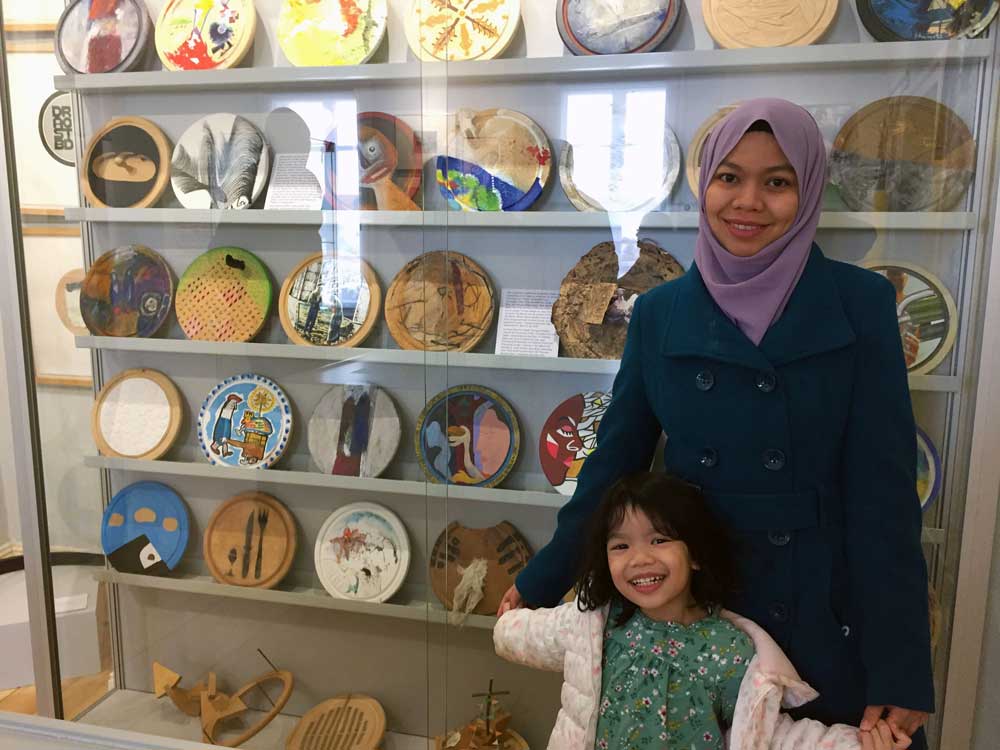Dr Noor Zafira from Malaysia trains the food engineers of the future
Dr Noor Zafira researches factory design and planning as well as food manufacturing. A winner this year of the European Hygienic Engineering & Design Group’s Hygienic Study Award, Dr Zafira also teaches her speciality as senior lecturer in the Department of Process and Food Engineering at the University of Putra (UPM) in Serdang, Malaysia. Food safety is a major interest and Europe helped establish the expertise of this scientist and engineer, Dr Zafira having studied factory planning at Albstadt-Sigmaringen University in Germany.
1. As a DLG member based in the Far East, what do you expect from this international organisation as far as your own special subjects are concerned?
I appreciate being informed on the latest trends, news, technologies, expert reports and know-how in agriculture. I also look forward to the possibilities offered by DLG for international meetings, workshops and seminars with partners, including universities and organisations from all over the world. Interesting for me will also be technical visits to farms, laboratories and food companies.
2. How do your university courses in Malaysia prepare the next generation of scientists in the food engineering profession?
First of all, the profession must be promoted to the general public. This has been done through social media such as Facebook. We also encourage publicity in newspapers and professional magazines of any food processing R&D achievements. I believe it is very important for my students to have industrial exposure throughout their degree programs. I involve local food companies in students’ projects. I also expect students to propose technologies and innovative improvements that can increase the productivity of factories without compromising food safety. Important, also, is to involve the companies in student development with discussions on the projects in place and end-of-semester presentations. I learned about such strategies at Albstadt-Sigmaringen University, not forgetting encouragement of communication skills, creative thinking in practical situations and teamwork.
3. Aspects of HACCP management for food safety in production and processing start back on the farm nowadays. What are the principles of »food safety«?
Food safety can be understood as the assurance that food will not cause harm or adverse health effects to consumers when it is prepared or eaten according to its intended use. Understanding about food contamination by hazards such as metal fragments, lubricant residues or pathogens is an important aspect. Controlling such hazards through good safety practices in »farm to fork« processes involves hygienic design and practice, prevention of cross-contamination, complete heating, keeping food at safe temperatures as well as using safe water and raw materials. Food safety is especially close to my heart as I am now serving as ambassador for the Global Harmonization Initiative (GHI).
GHI (https://www.globalharmonization.net) is the international non-profit network of individual scientists and scientific organisations working together to promote harmonisation of global food safety regulations and legislation.
4. And new developments in your speciality of process and food engineering?
In my field of food manufacturing and factory design we see developments featuring Big Data and analytic, cyber-physical systems and robotics. Innovations are accelerated by the increasing individualism in customer requirements. Flexibility is therefore increasingly important in competitive food production with very fast responses to market needs. I expect to see more interdisciplinary solutions in the food manufacturing sector involving collaboration between experts from farming, food processing, robotics, social sciences, electronics, IT and many more fields.
5. Will food processing and marketing developments be different in Asia?
I would say that Asian consumers are quite receptive to food and drink developments from other continents. But their preferences for local tastes still reign supreme. In Malaysia, for example, you see food from all over the world on supermarket shelves. In addition, we also have worldwide food brands selling localised food products such as Maggi Curry Instant Noodles and McDonalds Burger featuring sambal, a spicy condiment.
With urbanisation, enhanced education and growing standards of living, Asian consumers are also more aware of food safety and quality, factors that can be expected as key purchasing criteria in Asia.





